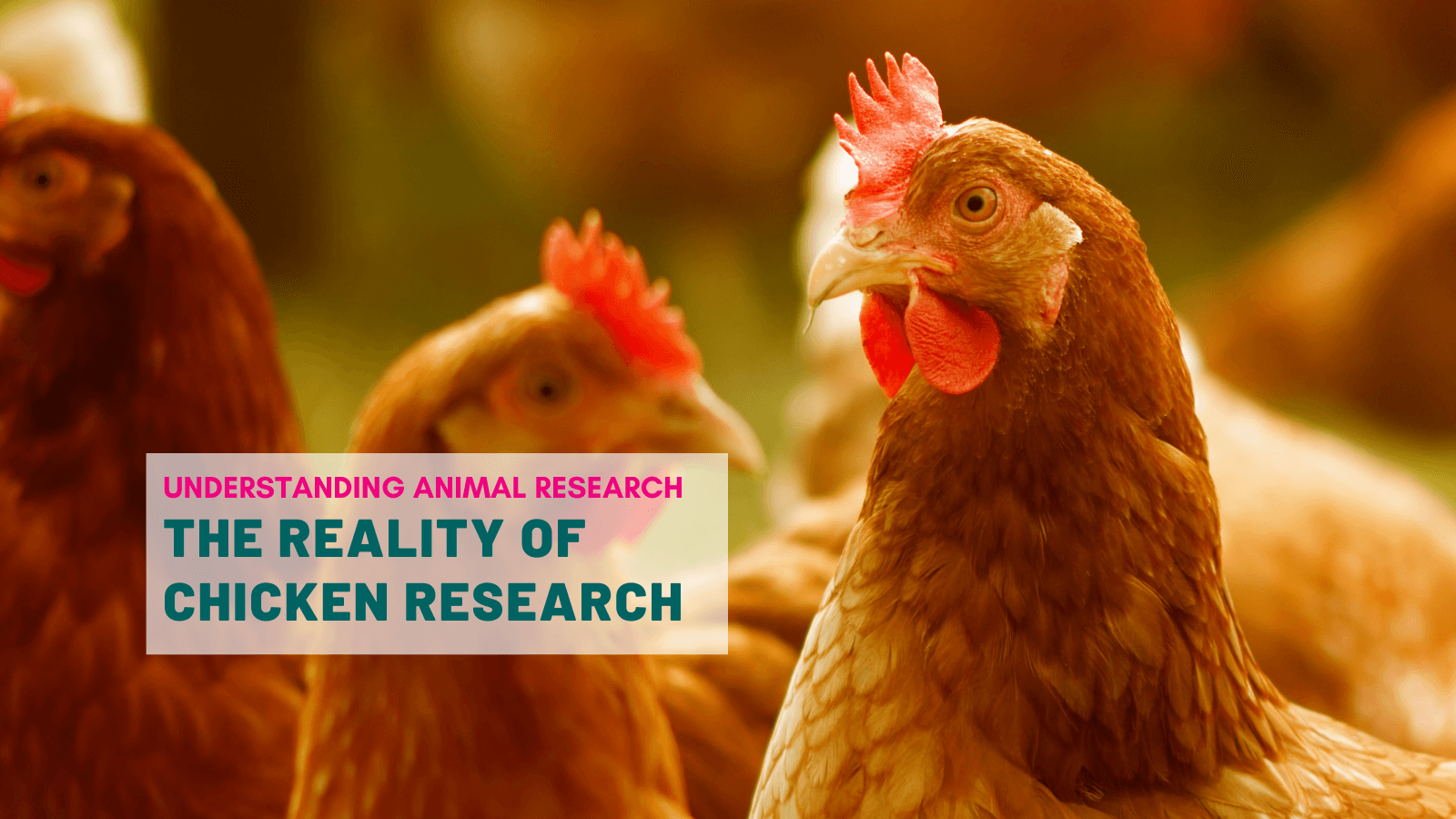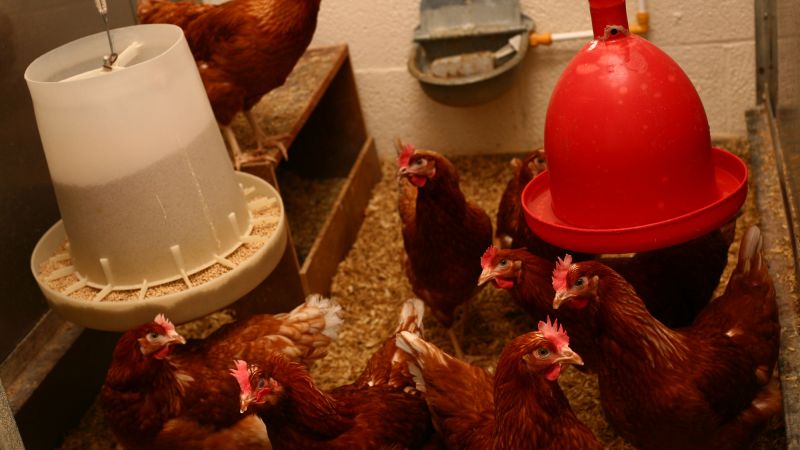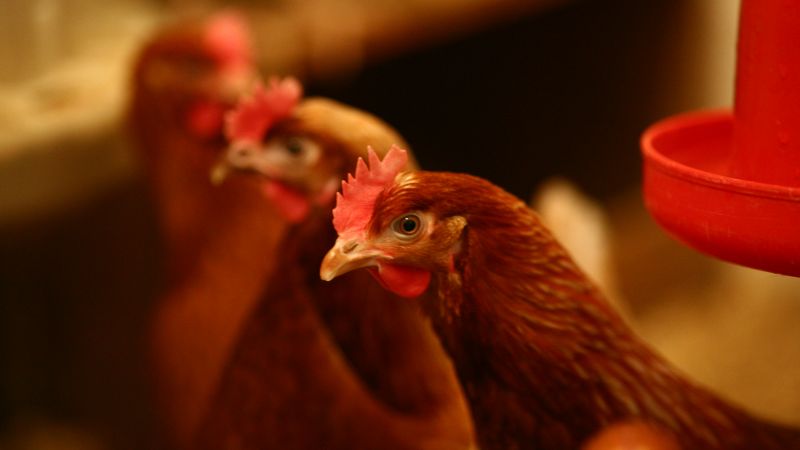In 2021, the animal research statistics for Great Britain showed that the number of birds used in research was greater than the number of rats. For the first time since records began, birds became the third most used animal species in British research.
“For most parts, these numbers represent chicken eggs at protected stages or chickens that are being used to improve the health of other chickens. Moving from rats to using chicken and incubated egg stages rather than hatched chicks or adult chickens is a welcomed refinement,” detailed Mike McGrew, Personal Chair of Avian Reproductive Technologies (ART) at the Roslin Institute.
Chickens remain valuable models to understand basic biology and learn more about human diseases but, first and foremost to help study and protect the trillions of chickens that are being bred worldwide every year for commercial purposes.
The egg before the chicken
A lot of the research that is carried out in birds, is in fact conducted in eggs. The chick embryo is a real asset for scientists. It grows relatively fast, can be easily accessed in the egg and can be manipulated experimentally without affecting the mother as is the case in the mouse. The hard shell of the chicken egg can be removed without harming the embryo inside. This allows scientists to observe how embryos develop without disturbing the developmental process.
This relatively big embryo is particularly important to study developmental biology: how the embryo forms and what genes and chemicals can influence its development. Information gathered in this model could help us understand the causes of some human development defects and how they can be treated or cured, it will also inform the study of developmental processes common in other vertebrates.
Chick embryos can be monitored throughout their development, but often these experiments can be done at a very early stage, even before the nervous system forms. In fact, most experiments caried out in eggs are not counted as animal experiments at all, because they are carried out in embryos prior to the regulated stage of embryonic chick development which takes effect at day 14 of development. Many of the key developmental processes take place before day 14 and are therefore not counted under The Animals (Scientific Procedures) Act 1986 (ASPA).
Chicken eggs, before they reach regulated stages, are mostly used to make vaccines. Ernest Goodpasture came up with the method of making vaccines by growing and inactivating viruses and bacteria in chicken embryos and fertilised chicken eggs. For the past 80 years, much of the world has relied on chicken eggs for the production of influenza vaccines but this method is also used to develop vaccines for chickenpox, smallpox, yellow fever and other infectious diseases.
The eggs are usually sourced from large scale commercial breeding sources.
“Research centres are licensed establishments, . Typically, chickens are obtained from other licensed establishments. However, original fertilised egg can come from commercial breeding stocks. Once the eggs – or resulting chickens - are included in research studies, they come under ASPA regulations, and all the corresponding welfare standards apply,” explains McGrew.
Chicken research benefits chickens
Around 242,200 procedures (14% of the total procedures carried out on animals) were carried out on birds in 2021, which is a substantial increase compared to the previous years.
“It seems to me that most of the increase in use of birds is due to the use of the chicken. This is mainly to study poultry feed additives in growth and health, poultry vaccines, but also to produce antibodies for human health assays,” McGrew told UAR.
Chickens are the most common animal used for commercial food production worldwide. The production of chicken meat and eggs is a major contributor to human nutrition, with more than 1 billion broiler chickens slaughtered in the UK alone, in 2021 . The commercial sector does a lot of research to make sure animals are fed optimally and cared for effectively, especially in the context of decreased antibiotic use.
“Research in chickens is very much focused on making the 70 billion or so birds bred each year disease free, well fed, with desirable traits and with higher welfare standards,” explains McGrew.
Management of diseases, in particular, is a major challenge to poultry production in terms of economic cost, animal welfare and zoonotic challenges to human health. Unlike mammals, birds do not have specialised lymph nodes and very different lymphoid tissues. This means that a lot of what we know about the mammalian immune system doesn’t apply to them.
To understand how the chicken immune system functions and use this knowledge to improve animal health, it is crucial to study avian specific biological models. Knowledge gained in avian immunology will lead to better and more efficient vaccination strategies or breeding of more healthy, robust chickens, which in turn will have significant academic, social, economic, environmental, and industrial impacts.
Transgenic chicken lines and biobanking
Chickens have historically been important to the study of various pathologies including cancer. Today, chickens remain a valuable model to study human diseases, often in replacement of some mouse models. Some genetic mutations in chickens can cause the same disease in humans. The recent sequencing of the complete genome of the chicken has considerably widened the scope, utility and validation potential of genetic modification approaches and functional genomics in the chicken.
“For example, at the moment, we are trying to use genome editing to create a chicken resistant to avian influenza. The idea is to produce a chicken that is naturally resistant to disease,” explains McGrew.
The Roslin institute is one of the only sources of transgenic chickens in the UK, and their numbers are quite limited. Very few procedures (Around 650 per year) are carried out for the creation and breeding of genetically altered lines. In fact, most of the chickens kept in the facility are used for breeding purposes, to keep particular strains of chickens alive.
Unlike mammalian models, researchers are currently unable to freeze bird semen, eggs or embryos.
“This means that we can’t store and bring back these special strains, we have to keep them alive and breeding, otherwise they are lost to science,” McGrew. “Some of the strains we have were established before the 1950s and have been maintained and reproduced ever since because we have no way to store them. We are currently looking into ways to freeze and conserve breeds of chicken in biobanks, which will considerably reduce our flock, but also have a huge impact on commercial breeding programs.”
In house chickens
The transgenic chickens at the Roslin Institute are produced and for most part cared for in-house without access to the outside, out of fear of avian influenza and to meet UK regulations on the housing of genetically altered animals. This isn’t always the case, and many research centres let their chickens roam outdoors in natural light. However, the chickens are kept continuously at very high standards of welfare.
“We are not allowed to keep the animals in cages” McGrew describes. “We house them under controlled temperature and light in pens together in family groups. They're inspected at least once per day to make sure they are well cared for and have everything they need.”
The chickens have access to different enrichments to keep them happy and busy.
“Chickens have a lot of personality and are sociable and active If a chicken is unhappy, you are going to know about it. It is quite obvious – and noisy. We want to house them in conditions where they are able to exhibit natural behaviours such as pecking or perching. They have rods, boxes, CDs and all kinds of toys they can climb, peck and play with. We've tried a lot of different forms of enrichments. Our only limit is that everything has to be sterilized to come into the facility to make sure we don’t bring bird flu in.”
Chickens have been domesticated for a long time, and it is often really hard to observe some of the natural behaviours that wild bird species exhibit such as incubation behaviour and chick rearing. Chickens are a really good model of diseases that impact on farmed poultry including studies using transgenic technology. For behavioural studies many researchers use smaller birds such as quail, who are highly photoperiodic, or zebra finches, who are particularly useful for understanding the neural basis of behaviour such as parental behaviour and song production.
Read more about Chickens in research in our A-Z of animals used in scientific research.
Read about the legacy of the first chicken cholera vaccine (1879) in 'The history of vaccines'.
Last edited: 25 April 2023 14:18




